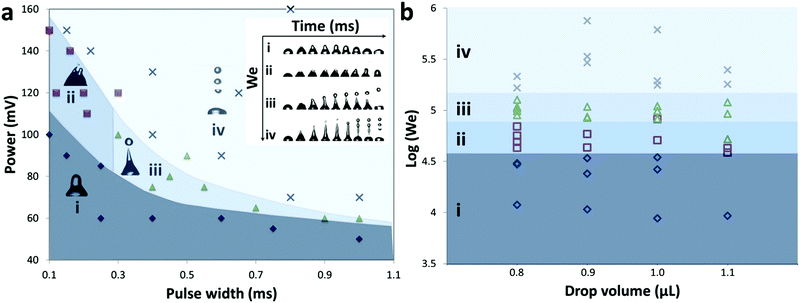 Open Access Article
Open Access ArticleCreative Commons Attribution 3.0 Unported Licence
Correction: Continuous tuneable droplet ejection via pulsed surface acoustic wave jetting
Jasmine O.
Castro
,
Shwathy
Ramesan
,
Amgad R.
Rezk
and
Leslie Y.
Yeo
*
School of Engineering, RMIT University, Melbourne, VIC 3001, Australia. E-mail: leslie.yeo@rmit.edu.au
First published on 21st June 2018
Abstract
Correction for ‘Continuous tuneable droplet ejection via pulsed surface acoustic wave jetting’ by Jasmine O. Castro et al., Soft Matter, 2018, DOI: 10.1039/c7sm02534c.
The authors regret the following errors in the original manuscript.
1. A typographic error is present in eqn (2) of the original paper. The definition for the modified Weber number in the equation should inversely scale as the square of the characteristic length L instead of linearly, as shown below:
Original version (with the error)
Corrected version
While the correct Weber number was plotted in Fig. 2b, the original figure had values that omitted the prefactor π. Consequently, the ranges for the Weber number for each regime in Fig. 2b have a lower magnitude. Fortunately, this results in the entire graph simply being shifted downwards, as shown below, and hence the conclusions derived from the figure remain unaltered. The correct version of Fig. 2b and the associated caption are as below.
2. On line 17 of page 6, the value of the absorbance should be 570 nm instead of 540 nm. This correction does not affect the results reported in the paper because the energetic bandgaps are identical, except for a shift in the y axis.
The Royal Society of Chemistry apologises for these errors and any consequent inconvenience to authors and readers.
| This journal is © The Royal Society of Chemistry 2018 |



